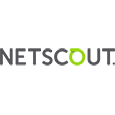by Contributed | Apr 30, 2021 | Technology
This article is contributed. See the original author and article here.
Hello MSIX Community! We are excited to announce that the April 2021 release (1.2021.422.0) of the MSIX Packaging Tool is now available!
We have released the MSIX Packaging Tool through the Microsoft Store, and are offering the offline download of the tool and license here as well.
Our April 2021 release features a number of bug fixes, as well as some improvements to the Device Guard Signing experience. To learn more about the features and fixes we’ve made, you can check out our release notes. If you have any questions, feature ideas, or just want to connect with the Product Team, join our Tech Community. We love connecting and hearing from you, so don’t hesitate to file any feedback with us via the Feedback Hub as well!
Don’t forget about our Insider Program, which gets you early access to releases as they are in development!
Sharla Akers (@shakers_msft)
Program Manager, MSIX
by Scott Muniz | Apr 30, 2021 | Security, Technology
This article is contributed. See the original author and article here.
CISA is aware of a compromise of the Codecov software supply chain in which a malicious threat actor made unauthorized alterations of Codecov’s Bash Uploader script, beginning on January 31, 2021. Upon discovering the compromise on April 1, 2021, Codecov immediately remediated the affected script. On April 15, 2021, Codecov notified customers of the compromise and on April 29, 2021, Codecov released an update containing new detections—including indicators of compromise (IOCs) and a non-exhaustive data set of likely compromised environment variables—to assist organizations in determining whether they have been affected.
CISA urges all Codecov users to review the Codecov update and:
- Search for the IOCs provided.
- Log in to Codecov to see any additional information specific to their organization and repositories.
Affected users should immediately implement the guidance in the Recommended Actions for Affected Users and FAQ sections of Codecov’s update. CISA recommends giving special attention to Codecov’s guidance on changing (“re-rolling”) potentially affected credentials, tokens, and keys. CISA also recommends revoking and reissuing any potentially affected certificates.
by Contributed | Apr 30, 2021 | Technology
This article is contributed. See the original author and article here.
Claire Bonaci
You’re watching the Microsoft us health and life sciences, confessions of health geeks podcast, a show that offers Industry Insight from the health geeks and data freaks of the US health and life sciences industry team. I’m your host Claire Bonaci. On this final episode for patient experience week, Antoinette Thomas talks with Dr. Zafar Chaudry, Senior Vice President and CIO at Seattle Children’s Hospital on how they are working to expand access to health care, and improve health equity in the greater Seattle area.
Antoinette Thomas
This is the third and final podcast in a three part series, exploring patient experience. And today we have a special guest joining us from Seattle, Washington Dr. Zafar Chaudry, and he’s joining us from Seattle Children’s Hospital. So welcome, Dr. Chaudry. And can you start off by sharing a little bit with our guests about your journey in health care and how your journey to Seattle?
Zafar Chaudry
Thank you. And thank you for inviting me to speak with you for for a few minutes here. So yeah, I started my career in medicine. Internal Medicine is my specialty. I started off as a physician, but very quickly moved into the tech industry. This was a time when we had to learn multiple keys on a keyboard and lots of green screens, dos based solutions. And I volunteered to take some training in that space because they wanted clinical people to work in technology. And then from there I evolved into dot com before it went dot bomb. And then from there, back into health IT have been CIO for 20 plus years worked in probably 20 different healthcare systems around the world have also been on the vendor side work for Gartner. And yeah, I’ve been here at Seattle Children’s as senior vice president CIO for just over three and a half years.
Antoinette Thomas
So we recently had a very engaging conversation a couple weeks ago. And I was so impressed by some of the work that you’re doing there, specifically around health and digital equity. So I would really love for you to share with our audience, your experience, what you’re seeing there in Seattle, and I apologize, I actually live a mile equidistance from two major health systems in Cleveland. So how appropriate that we have sirens. Yeah, so share a little bit about that conversation and about what you’re doing, and what your vision is in addressing digital and health inequities.
Zafar Chaudry
So at Seattle children’s, our mission is to provide hope, care and cures for children. And the way in which I interpret that is not only treating a child when a child is sick, but how do we help the child through through their entire journey of growing up. And so from a technology point of view, we’ve been looking at this in multiple in multiple ways. So just before the pandemic, we actually built a coffee shop in our downtown Seattle facility. And the coffee shop was designed to take homeless children and train them to be baristas. And half of the coffee shop was a tech bar, where we were going to take children and train them to be a plus certified. And get them on the career path, especially for those children that lived in underprivileged areas in this route in and around the Seattle City. And as we’ve been thinking through this, but then the pandemic hit, and so that’s sort of been currently close. But as the as the pandemic hit. And we’ve been thinking through this, one of the things that came to mind was, how do I build a pipeline of new talent because Seattle is very competitive place specially in tech, companies like yourselves, can take up most of the talent, so we still have to compete in that market. So we’ve been looking to build a training program for high school graduates who may not have access to or be able to pay for a full degree. So we’re working with the Seattle City Colleges of Seattle to build an associate’s program in health information technology. I’m very pleased to say that after about a year’s worth of work, that’s, that’s all ready to go. We’re waiting for state approval, but we will start hiring the first cohort of students into the program this fall. And as part of that commitment that we have with the City College’s Seattle Children’s, my department will sponsor 10 students for their fees and expenses for the two year program, build a pipeline into my team. In terms of patients, so, pandemic has taught us that you have to pivot very quickly to a different way of working. So on site off site and for patients, the experience has changed. So prior to the pandemic, we weren’t really doing many telehealth visits per week. We’re currently doing about 15,000 telehealth visits per week. And what we’ve learned from this journey of the last 12 to 14 months is there are still many people that we serve, that don’t have access to decent internet connectivity, don’t have access to the right hardware. So if you imagine a household that may have five children, two adults all trying to work, it’s very unlikely that a household of seven or five will have seven laptops available so that they can do their telehealth visit whilst doing their work whilst doing their schoolwork. So we’ve learned this during this journey, we’ve also set up programs to lend devices, to those people that need connectivity slash a piece of hardware, we’ve piloted that that’s been successful. At the same time, we have 46 sites across four states as the health system. And for the pandemic, we did set up our clinics to be walk-in telehealth center. So you could walk in, use our equipment, be safely distanced in a room by yourself that’s been sanitized, and access your virtual visit without connections, and that’s also had relatively good uptake.
Antoinette Thomas
Those are some really unique and innovative ways to address inequities, and specifically, your approach to the device lending and you know, the big elephant in the room, which is the explosion of virtual health and, you know, not enough access to internet or broadband, as we can continue to think about this. And, you know, I guess my last question for you sitting here, you know, working for one of the large technology companies here in the United States is what, what can those of us on the technology side, the company, the vendor side, what can we do to partner with you, or help you help other health systems in solving for this very, very big problem?
Zafar Chaudry
So I think there’s multiple programs we could think about. So one would be a reduced cost program where people could buy decent hardware. And the other would be since you’re such a big vendor is maybe build a purpose built device that does telehealth visits, right? Because it could be built on a cheaper platform. It has it serves a purpose it has built in connectivity. So maybe we can take advantage of the advanced 4g and now 5g networks, an offer a tablet type device that people can buy, consume, or even rent, you know, at low cost, because we’re there’s a lot of leasing going on with equipment now versus do I spend 900 on a on a device? Or can I make the first payment for 40 bucks and then consume that device, and then hand it back after 24 months? Something to that extent, I think that’s where we should think to partner, and then have subsidized programs for those folks that still don’t have the right access? Because without access, how do we develop our communities, certainly our pedes community, right. And not everybody has. I mean, people tend to have smartphones. That’s what the data shows, but people who don’t have a strong income tend to have Android based smartphones. Now, there isn’t a Windows based smartphone anymore. And the apple ecosystem seems to be prohibitive for families that are really living on that sort of poverty line. The pandemic has certainly pushed more families into not having insurance for their kids, and then putting their kids on Medicaid programs. 53% of our patients currently are funded by Medicaid programs. And Medicaid is a federal program. It doesn’t really pay that well. And so that has an impact as well in terms of what services we can provide. So I think it really has to come from a vendor perspective, can we build the device, use a device that is inefficient? Which is efficient, but less expensive to actually consume and use and must have a level of connectivity.
Antoinette Thomas
Well, that’s ending our time today. But I what I want to do is I want to thank you for joining us. And I also would love to stay connected and perhaps have a follow up conversation in six months to 12 months because I would really like to reengage you to share with our audience the results of the program, the scholarship program, and then also just really kind of keep the finger on the pulse of you know, how we are how you are working to solve these equity issues, specifically in the range of market share of the Seattle Children’s Hospital. So, I thank you again and we appreciate your time.
Claire Bonaci
Thank you all for watching. Please feel free to leave us questions or comments below and check back soon for more content from the HLS industry team.
by Scott Muniz | Apr 30, 2021 | Security, Technology
This article is contributed. See the original author and article here.
The Samba Team has released security updates to address vulnerabilities in multiple versions of Samba. A remote attacker could exploit some of these vulnerabilities to take control of an affected system.
CISA encourages users and administrators to review the Samba Security Announcements for CVE-2021-20254 and apply the necessary updates and workarounds.





Recent Comments